Skip ahead
- What is SEO for eCommerce?
- Benefits of SEO for eCommerce Sites
- How to Do SEO for eCommerce Websites: The Steps You Need to Take
- Local SEO: Your SEO Strategy Won’t Be Complete Without It
- The Basics of Local SEO for eCommerce
- What to Do If You Want to Optimize Your Site for Multiple Locations
- The Importance of Auditing SEO Strategies for eCommerce Websites
- What Makes Up An SEO Audit Checklist
- Why A Competitor Audit is Essential
- How Much Does SEO Cost For eCommerce? A Rough Guide
- Increase Your Competitiveness with a Robust SEO Strategy
Search engine optimization or SEO is the process of improving a website's performance on Google and other search engines. Generally, a website with excellent SEO will appear higher on a search engine's results pages (SERPs). However, the precise SEO strategies you use will depend on the type of website you have. In this comprehensive guide, we’ll take an in-depth look at SEO for e-commerce sites. You’ll notice that while there are some things you can do to improve your website’s ranking, there are times when it’s best to hire an expert in SEO strategies for eCommerce websites.
What is SEO for eCommerce?
SEO for eCommerce is the process of improving the visibility of an online store in the SERPs. The strategies you employ are designed to get your pages ranking as highly as possible so you can attract more traffic and generate more sales. If you want your store to be successful, it is imperative that you learn how to do SEO for eCommerce websites or hire someone who is skilled in this area.

Benefits of SEO for eCommerce Sites
Optimizing your website for search engines is important because it helps to drive organic search traffic. That is, it helps to draw in people who want to buy the products you sell without forcing you to pay for ads. When your website is properly optimized, your business can benefit in several ways.
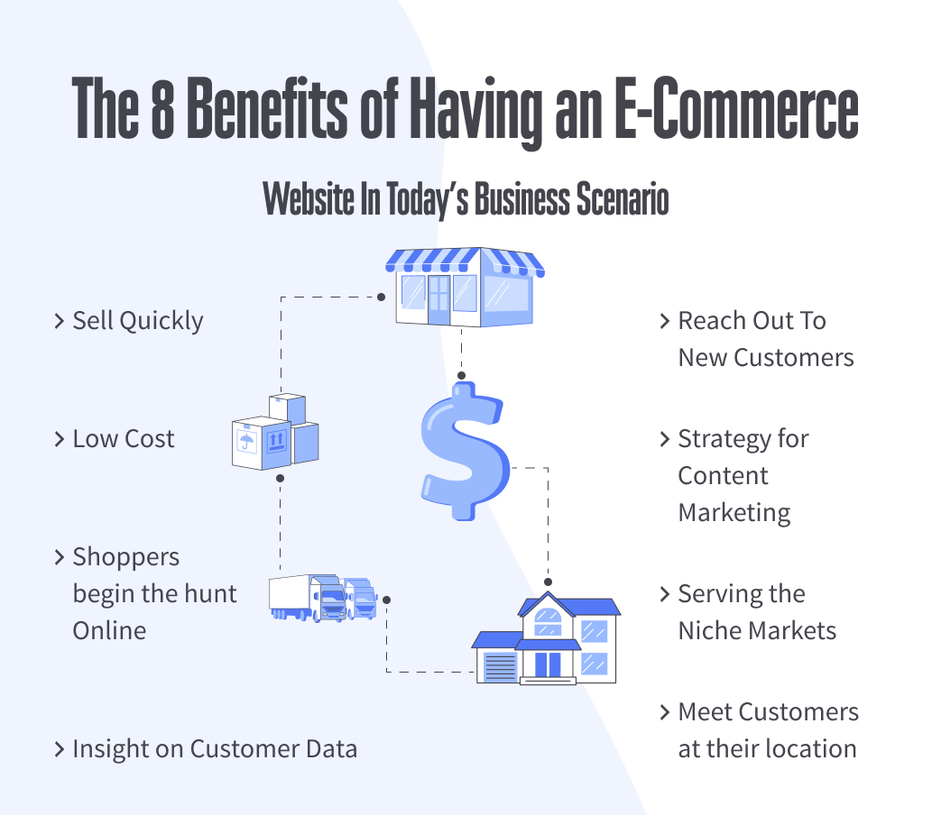
SEO Increases Brand Awareness
If your business appears on the first page of the Google search results, you can boost your brand awareness. Search engine users often don’t go past the first ten results and they’re more likely to trust the top-ranking sites, especially when they’re searching for a specific product. Searchers often believe that a site is reputable if it appears on the first page and this increases the chances that they’ll click on the link.
SEO Boosts High-Quality SEO Traffic
If you want to operate a successful eCommerce operation, you don’t just want search engine traffic; you want targeted traffic. Put another way, you primarily want website visitors who have an interest in purchasing what you sell. When you optimize your site with specific keywords, you’re more likely to attract people who are searching for those very terms. Let’s say your website sells children’s shoes only. For the most part, you may want to attract parents who want to purchase shoes for their children. If your website isn’t properly optimized, you may attract people looking for everything from women’s shoes to shoe repair services. You would be getting traffic but it won’t be the type of visitors who will become buyers. Part of your SEO strategy will be to identify the keywords that are most likely to drive sales and then optimize your site accordingly. We’ll discuss keywords in detail later.
SEO Helps to Build Out Your Sales Funnel

SEO for e-commerce can help to ensure your product pages rank high in the results. However, this is bottom-of-the-funnel content that’s only relevant when the customer has already decided they want to buy from you and they are ready to take action. Your eCommerce SEO strategy also needs to include content that targets visitors in the awareness, interest, and desire stages of the funnel.
By appealing to people at each phase of the buyer journey, you’ll increase the likelihood that the person will choose your business when they’re ready to buy. It’s important to know that the keywords people use will change as they move through the eCommerce sales funnel. If your website shows up regardless of which keywords they use, it’s more likely that you’ll be able to convert them into buyers.

The three types of search intent actually align with stages of the buyer’s journey. Therefore, a person in the awareness stage will likely perform an informational search. They want more information about something so they may search for “online bookstores”.
When they move on to the interest stage, they’ll perform a navigational search since they know exactly where they want to go. Therefore, they will search for “Bill’s Books”. When the searcher is ready to buy, they’ll perform a transactional search. They may search for a specific product such as “Romeo & Juliet” or use the term “buy” or “order” or “price” such as “where to buy classic books”. Many local searches are transactional as well so if a person searches for “online bookstores near me”, they may be looking for you.
SEO Improves the User Experience
Another reason why you should invest in SEO for eCommerce is that it provides the user with a better experience. Google and other search engines are more likely to rank your website highly if it offers high-quality content that meets the user’s needs. If people who visit your online store don’t get the content they expect, they’ll leave. This will indicate to the search engine that the visitor didn’t have a good experience. This could lower your ranking.
SEO Increases Conversions
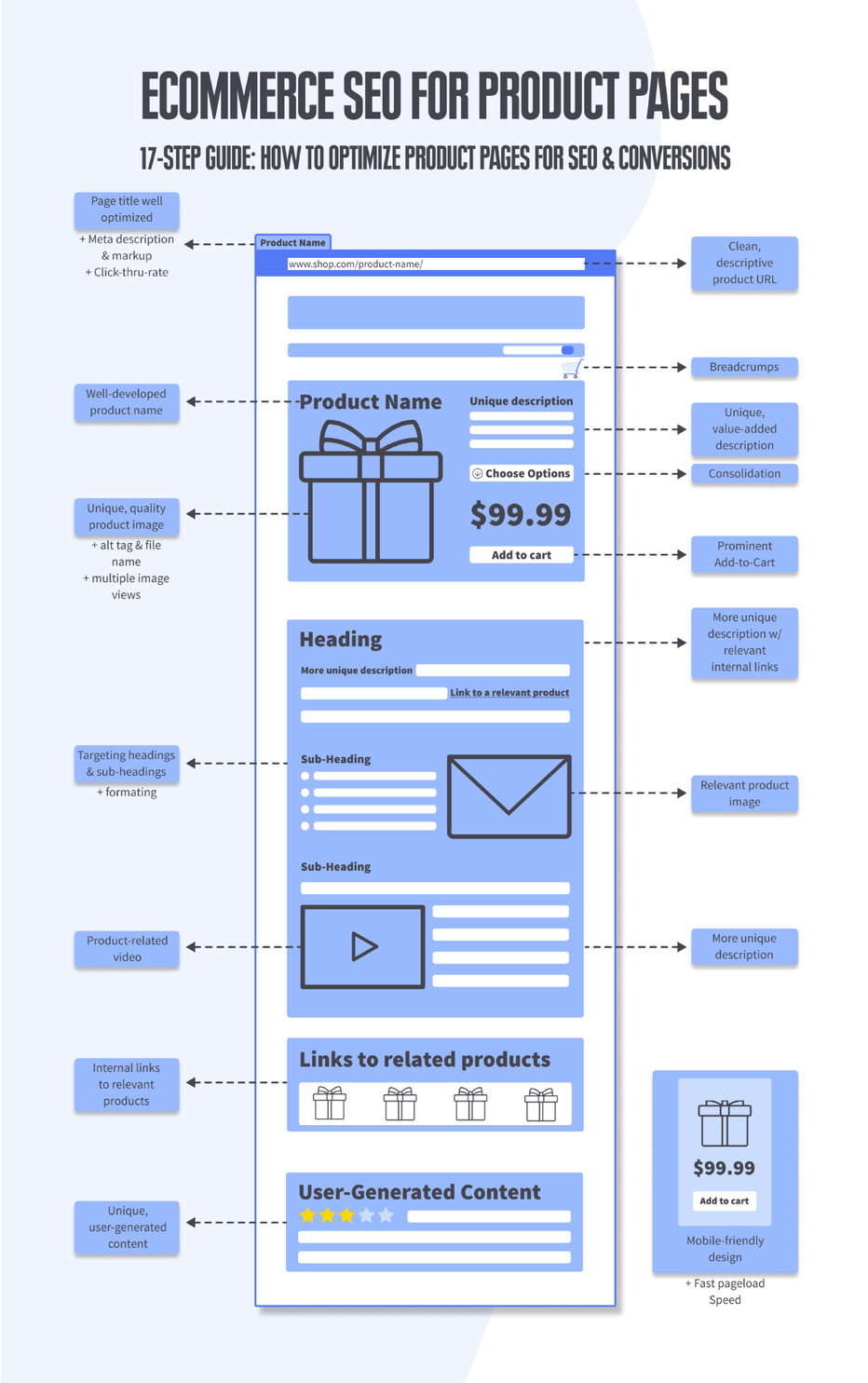
When you receive highly targeted traffic, optimize your content for each stage of the buyer’s journey, and create a good user experience, you’re likely to get more conversions. If you’re not meeting the needs of your potential customers and your site is ranking low in the SERPs, your conversation rates are likely to be lower.
SEO Reduces the Amount You Spend on Paid Ads
Some online business owners believe they need to invest thousands of dollars in paid ads in order to be successful. While advertising can be an important part of your online marketing strategy, it’s far from the only option. By using SEO for eCommerce, you can attract free traffic from people who want what you sell. The return on investment is also higher than that of online ads. In addition, if you use Google Ads, an optimized website will improve the quality score for your landing pages and this will reduce your cost per click.
SEO Produces A Long-Term Return on Investment
Ads usually stop working once a particular campaign ends and advertising constantly is costly. One of the major benefits of eCommerce SEO is that the work you do now can help your business for months or years. While SEO requires ongoing work, it offers a longer return on investment than any other marketing channel.
How to Do SEO for eCommerce Websites: The Steps You Need to Take
Now that you know why SEO is so crucial to the success of your online store, you’re probably curious about what you need to do to get your site on the first page of the SERPs.

Do Your Keyword Research
The first thing you need to do is research the keywords that are relevant to your business. What terms are people likely to use when they need your products? It may seem like those terms are obvious and you don’t need to spend any time looking into them. However, not everyone will use the same combinations of words and as you know, many words have synonyms. While you may be able to think of some of the generic keywords on your own, identifying those long-string keywords will take effort.
Also, there are strategies involved in SEO for eCommerce. You need to optimize your website for keywords that have a high search volume and those that you can reasonably try to rank for. You also need to use keywords that can lead to conversions.
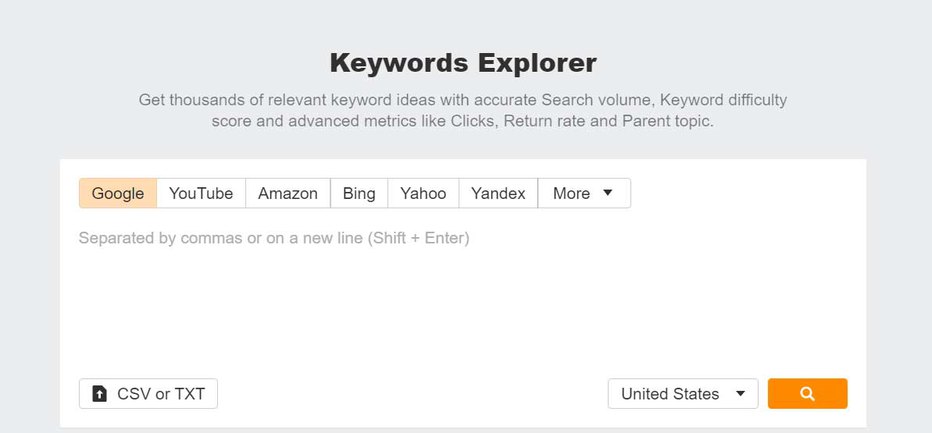
Typically, if there’s a high search volume for a particular keyword, there’s potential for lots of traffic. However, there’s also lots of competition from other websites. In contrast, when a keyword has a low search volume, the competition is likely to be low and you’ll have an opportunity to get a lot of the traffic. However, the traffic is likely to be lower overall.
High-volume keywords are usually just one word while low-volume keywords tend to be longer. Your strategy will likely include a mixture of both types of keywords. If there are lots of players in your market, including big-name companies such as Amazon or Alibaba, it will be difficult for you to rank high on the first page for the most popular keywords. It may be better to target keywords with high search volume and low competition.
When seeking to identify the most effective keywords, you need to consider not just popularity but relevance. That’s because your keywords need to match the user’s intent. If you use misleading keywords, your bounce rate will be high and this will likely result in a lower ranking. Avoid clickbait at all costs since it’s more likely to hurt your website’s performance than help it.
Tools you can use to help with your research include SEMrush, Ahrefs Keyword Explorer, Google Keyword Planner, and Long Tail Pro.
Improve Your Site’s Structure
Keywords are just the start of the process where SEO for eCommerce is concerned. You then need to turn your attention to ensuring you have the optimal structure for your website. When we talk about structure, we mean the way you set up your site navigation, product pages, and category pages. If it is difficult for visitors to find what they need, your Google ranking is likely to suffer.

The keyword research you did at the beginning can actually help to inform your URLs and categories. The home page should link to all the major categories and perhaps the most popular product pages. Ideally, no webpage should be more than three clicks away from the other. When your site is easy to navigate, and the internal linking is strong, it’s more likely that your business will have a high ranking.
Work on Technical SEO
SEO for eCommerce product pages also needs to include a focus on technical SEO. Many sites have technical issues that prevent them from showing up in the first ten search results. Technical SEO refers to improving your website and servers to make it easy for search engines to crawl and index the content. Let’s look at three of the things you need to pay attention to in the backend of your website.
Robots.txt
You won’t want search engines to crawl every page on your site. There’s no benefit to Google accessing customers’ shopping carts or your log-in pages. Therefore, you can block search engines from crawling these types of pages by using Robots.txt files. Google has gotten a lot better at determining which pages it should pay attention to and which it can ignore. However, shopping sites tend to have more pages that need to be excluded so Robot.txt files are especially important.
Sitemaps
If you’ve been looking into technical SEO, you may have come across XML and HTML sitemaps. XML sitemaps encourage search engines to crawl your URL.They help search bots to index all the pages that need to be indexed. XML sitemaps don’t guarantee that a page will be indexed but they greatly increase the likelihood that this will happen. Meanwhile, HTML sitemaps facilitate internal linking and help visitors to navigate your website. In fact, they make it easier for people to find any page on your site. While this doesn’t have a direct impact on your SEO, it does improve the user experience.
Canonical Tags
If your site is large, canonical tags are important. Many eCommerce sites have product pages that users can reach from several different categories. This means that several URLs will lead to the same content. A canonical tag is a small piece of HTML code that tells search engines which version of the URL you want to be featured in the search results.
Invest in Content Marketing
Content creation is a key part of SEO for eCommerce store promotion. It may seem like the only way to sell your products is to constantly put them in front of potential customers. However, you also need to educate, entertain, and inspire your audience. Online content can take several different forms including podcasts, infographics, videos, and blogs. Even though your ultimate goal is to generate more sales, your content shouldn’t be overly salesy. You can get ideas for content by reviewing your frequently asked questions or using SEMRush’s Topic Research feature.
Make Social Media Work for You
SEO strategies for eCommerce websites need to include social media. It’s not enough to post content solely on your website. You also need to share the links on social media and make it simple for others to do so. This falls into the category of off-page SEO. Likes, shares, comments, and saves help to build brand awareness and site authority and in turn, boost your search engine rankings.
Look for Opportunities for Link Building
Your content needs to be of such high quality that other people want to link to it. Google uses these backlinks as ranking factors so you want to make sure that mainly authoritative sites are linking to yours. There are a few ways in which you can build backlinks. One is to guest post on other relevant blogs and place a link to your site in the article or at the end of the post. This can introduce your business to a completely new audience.
You can also use tools like Ahrefs Link Intersect or SEMrush Backlink Gap tool to identify domains that link to your competitors’ websites but not yours. Some of them may be relevant to your business. Reach out to them to find out if they would be open to including links to your website as well.
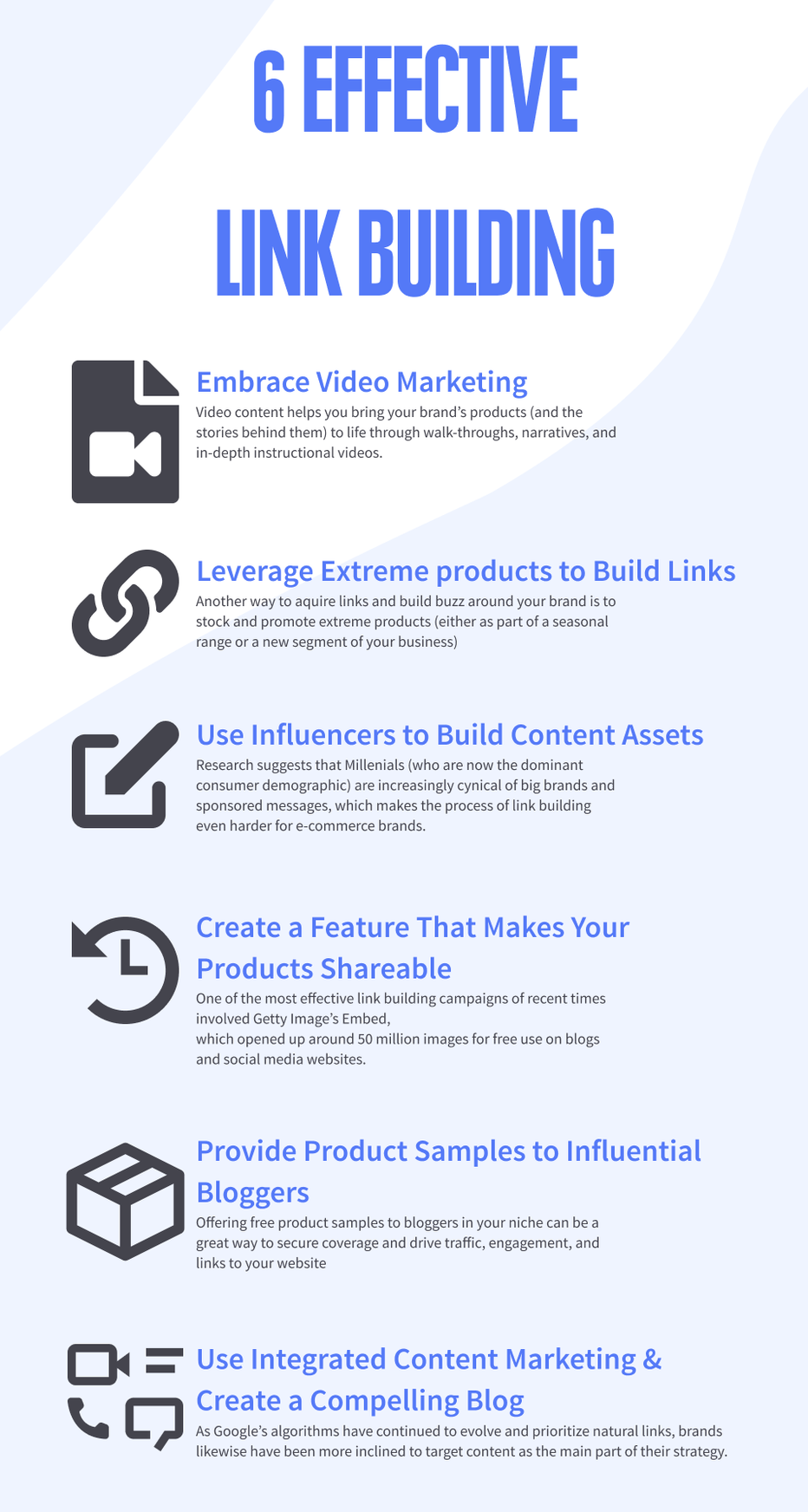
Another option is to talk to the suppliers, manufacturers, or distributors of your products to see if they have directories or websites on which you can list. These entities are often willing to provide backlinks for companies they have relationships with.
Local SEO: Your SEO Strategy Won’t Be Complete Without It
If you have a physical location in addition to your eCommerce website or you sell to customers in specific areas, you need to familiarize yourself with local SEO. This will help you to reach the people who are located in the areas in which you do business.
Often, even if a person simply searches for “bookstores”, they’re looking for options that are at least somewhat close to where they are or where they live. They may also be looking for a store that ships to their location. If you have a bookstore in Philadelphia, you’ll want to rank high in the search results for people who are in Philadelphia. To achieve this, you need to optimize your site for local SEO.
You may think this only applies to businesses with a physical store but that’s not the case. If you deliver orders placed on your site or you sell products ideal for people in a specific place, you need to work on local SEO for eCommerce. Local SEO helps you to focus specifically on your target audience instead of everyone in the state, country, or even the world. Local optimization includes both on-page and off-page strategies. Let’s take a closer look at what local SEO is and how you can use it to improve your eCommerce site.
The Basics of Local SEO for eCommerce
When people perform online searches, Google and other search engines seek to provide them with the best possible results. To achieve a high ranking, you need to show the search engines that your site has valuable content to offer on a certain topic and it offers an excellent user experience. To help you do this, you need to do many of the things we’ve discussed so far such as:
- Making sure it’s easy to navigate your store
- Creating high-quality content on a consistent basis
- Generating high-quality links from trusted websites
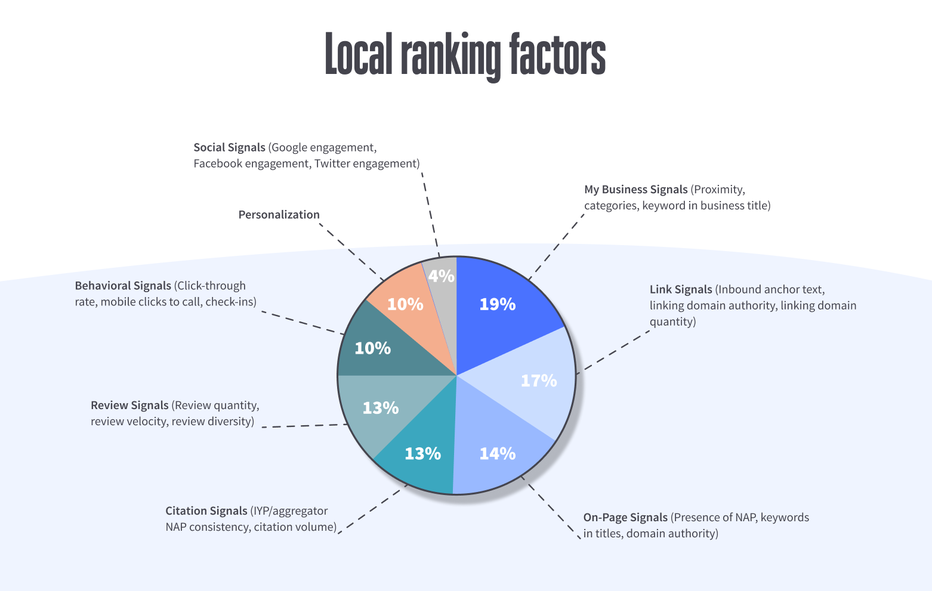
You should also:
- Ensure your site loads quickly
- Have a responsive website that functions on devices of any size
- Make sure your website is secure
Once you’ve taken care of these basics, you’re ready to move on to some specific local SEO strategies.
Claim your Google My Business Listing
It’s free to set up a Google business listing and it will show up on Google searches as well as Google Maps. The listing will include the name of your business, its location, your opening hours, and more. Be sure to provide as much information about your business as possible and ensure it’s all accurate. Customers can also post reviews under the listing and you can respond.
Claim Your Listings in Other Directories
You don’t need to list your business in every directory you can find. Not all of them will be relevant to your business or industry and some won’t offer any value. However, you should search for those that are appropriate for your industry and trusted by potential customers. The most highly respected listings include:
- Yelp
- TripAdvisor
- HomeAdvisor
- Bing
- Angie’s List
- Apple Maps
- WeddingWire
If you list your business in multiple directories, you need to make sure the information is consistent. If your opening hours or another detail changes, you need to update each listing. If you have conflicting information across the web, this can harm your rankings on the SERPs. This may seem like a lot to manage. If you can’t manage it in-house, consider outsourcing the SEO services for your eCommerce website.
Localize your Keywords
If you’re currently only using generic phrases like “mystery books” or “non-fiction books”, you need to focus some of them on your local area. Therefore, you may want to use terms like “Philadelphia mystery bookstore” or “non-fiction books for sale in Phoenixville”.
To start finding out which keywords you should use, you can start by typing phrases into Google and seeing what autocomplete suggests. However, you will then need to use a more sophisticated tool like Moz Keyword Explorer or SEMRush to learn the exact terms your target audience is using. Once you’ve identified some keywords, use them naturally in your content, meta descriptions, and page titles. Avoid the urge to stuff keywords everywhere.
Create Content Targeted to Your Area
High-quality content is a great way to establish your website as an authority on certain subjects. If you’re already creating blog posts, videos, or other types of content, you may need to change the topics a bit when you focus on local SEO. You may want to write about things to do in the area surrounding your bookstore or books set in your city.
Prioritize Customer Reviews
Reviews aren’t only popular among potential customers. Search engines also love them so you need to make sure you have some under your listings. The easiest way to get reviews is to simply ask for them. Not every customer will want to write a review or give you a star rating but if you provide a good experience, you will get some positive reviews. You can add review requests to your emails, put a note in your packaging, or remind customers to leave a review when they check out. Be sure to respond to reviews wherever possible and make changes to your operations if necessary.
Generate Local Links
We highlighted the importance of getting authoritative backlinks earlier. While you may want some of your links to be quite general, you should also get some from authorities who are in your area. You can reach out to local bloggers or other influencers, seek out features in city directories, or try to get a feature in an online news outlet or magazine. Building local links can help to boost your search engine rankings.
Leverage Structured Data
Structured data is a tool you can use on your website to provide Google and other search engines with detailed information about pages on your website. Search engines use this information to provide searchers with highly informative results known as rich snippets. Without clicking away from the SERP, people can access a wide range of information including reviews and product details.
To implement structured data, you need to describe your site to search engines in a way they can understand. The major search engines use Schema.org which translates your content into a code that they can process. This is important since you’ll rank higher in the rankings if search engines understand exactly what your site is about. Also, when a user gets highly specific information in their search results, they’ll be more likely to click on your link.
What to Do If You Want to Optimize Your Site for Multiple Locations
You may be wondering about how you should approach local SEO for eCommerce if you have one website that serves a few different locations. Maybe you deliver to a couple of bordering states or you have two physical stores and you facilitate pickups. Your options include:
- Building separate landing pages for each location. Each page would include information that’s specific to that store such as the address, contact details, reviews, photos, and blog posts. Your structured data which we discussed above would also be different.
- Build backlinks to each landing page. When applicable, backlinks should point to the location-specific landing pages. This is especially important if a blog post or news story is about a particular store rather than your business as a whole.
- Create different directory listings. Be sure to claim listings for each location on Google My Business and any other directories you choose. Keep in mind that you’ll need to update each listing any time the details change.
- Produce content about each of your locations. Each store location likely has its own origin story, customers, employees, neighborhood, and activities so use these to create unique videos, blog posts, and other types of content.
The Importance of Auditing SEO Strategies for eCommerce Websites
After reading the above SEO tips for eCommerce sites, you may decide to start making some changes to your site. Alternatively, you may decide to hire a digital marketing company to take care of everything for you. Whichever route you decide to go, you need to know that your SEO strategy won’t be set in stone.
You’ll need to make changes to your site on a routine basis if you want to maintain your position in the rankings. That’s because ranking factors and search engine algorithms change all the time. Also, as time goes on you’ll realize that you need to improve your user experience because expectations have changed.
How do you know what needs to be changed? You perform an SEO audit. The audit helps you to identify what you’re excelling at and what you need to improve. You also need to audit your competitors’ websites. People who aren’t shopping with you are shopping with them and you need to find out why so you can grab a larger share of the market. By auditing your SEO practices and those of your competitors and responding appropriately, you can increase your organic traffic and increase conversions.
If you’re not sure what an SEO audit entails or how you should get started, the checklist that follows will provide the details you need.
What Makes Up An SEO Audit Checklist
A comprehensive audit will cover on-page SEO, off-page SEO, and technical SEO so let’s discuss each of these in turn.
On-Page SEO Audit
Your on-page SEO analysis needs to include your content and the HTML source code on all the pages. Here are some of the things you need to pay attention to.
Keywords
You will have to follow a series of steps starting with an assessment of your keyword use. As you should know by now, keywords play an important role in your website’s search engine ranking. Therefore, you need to make sure you’re using them optimally. You can use the Google Search Console to identify the pages that aren’t performing well.
Analyze these pages to determine whether your keyword density is adequate. If you didn’t use the main keyword enough, be sure to include it a few more times in both your metadata and the content that your audience sees. If you’re satisfied with the main keyword density, look for other keywords that you can sprinkle through the content. The search queries that individuals use to find your website may provide you with some additional keywords.
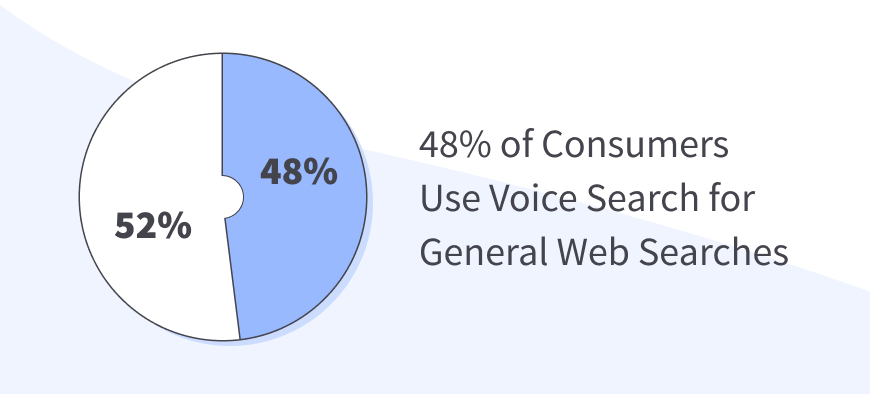
Meta Descriptions and Title Tags
When a person searches for a keyword related to your website, the first things they see are your title tags and meta descriptions. These determine whether they will click your link and read more. Therefore, you need to make sure these are appealing and they accurately represent what the web user will find on the related page.
You’ll need to assess your click-through rate (CTR) to get an idea of whether your metadata is encouraging people to click your link. CTRs vary from industry to industry so you’ll need to assess your metrics against the standard in your industry. If you determine that your CTR is too low, try to improve your meta descriptions and title tags and add in relevant keywords.
If your CTR is high but you’re not getting enough conversions, assess whether your metadata is an accurate reflection of your content. People may be clicking the link expecting to find one thing and then leaving because they don’t see what they’re expecting. Accurate metadata is essential if you want your SEO strategy to lead to increased business.
Content
Is the content on your website meeting the needs of your target audience? Are they leaving your site feeling informed, entertained, inspired, or some combination of these? Your content goals will vary somewhat depending on what you sell but you need to assess whether it is achieving what you want it to achieve. Are there topics that you haven’t covered that would be of benefit to your target audience? Are your competitors creating content that you aren’t? If so, you’ll want to fill the gaps.
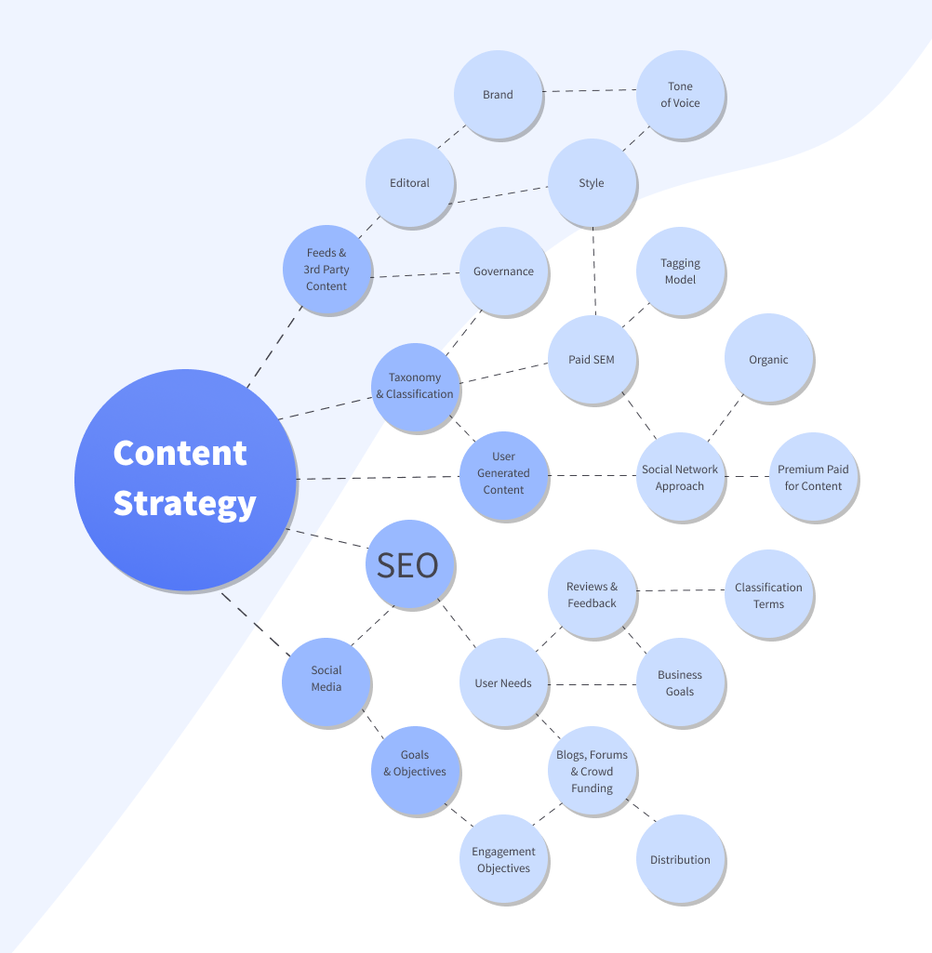
Technical SEO
After you take stock of your on-page and off-page SEO, you need to audit the technical side of your site. This may not be as exciting but it’s necessary. Technical SEO plays a big role in determining whether search engines can crawl your web pages and index them. Since eCommerce websites tend to have more pages than many other types of sites, there’s lots of room for things to go wrong. Let’s look at how you can analyze and improve your technical SEO.
Recheck Your Robots.txt and XML Sitemap Files
You may remember that the robots.txt file tells search engines which pages to crawl. Your XML sitemap tells search engines which pages need to be indexed and notifies them when they’ve been updated. XML sitemaps also help search engines to understand the structure of your website. As part of your SEO audit, you need to make sure that these files are in place and it continues to be easy for search engines to crawl and index your pages.
Google offers tips for managing both robots.txt and sitemaps so you won’t lack expert guidance. You can use the Google Search Console to make sure that the search engine can still crawl and index your eCommerce site. If you find out that your site isn’t being crawled or indexed, you need to check your files, increase the number of internal links, and try to get some high-quality backlinks.
Check Your Load Times
Everyone knows how frustrating it is when a website loads slowly. Potential customers will only give a webpage two or three seconds before they give up and go elsewhere. If your competitors are offering faster load times, you’ll lose business. Also, your slow site will increase your bounce rate and potentially affect your search engine ranking. Even if your content is excellent and you have amazing products, fewer people will know. People will even abandon their shopping carts because they can’t wait any longer.
Your audit, therefore, needs to include an analysis of your page speed. You can use Google Pagespeed Insights to find out if your site is too slow, and if so, why. Depending on what the challenges are, you may need to compress your image files, change your hosting provider, or enable caching if you have not already done so.
Assess Your Site’s Responsiveness
Mobile-friendliness is an important ranking factor for Google. This search engine actually crawls and indexes the mobile version of your site first. If your mobile site doesn’t offer visitors a good experience, this will hurt your ranking. That’s because almost half of all website traffic in the USA originates from mobile devices such as tablets and smartphones. If it’s hard for people to navigate your website when they use certain devices, your bounce rate will increase. Your SEO audit, therefore, needs to include an analysis of your site’s responsiveness.
Try the Google Mobile-Friendly Test to see how your site stacks up. If you discover that your site only offers a good experience on larger screens, you need to invest in a responsive site. When your website is responsive, it will automatically adapt to desktops, laptops, tablets, and smartphones. Visitors won’t have any difficulty viewing our content, finding products, or completing purchases.
Analyze the Site’s Security
This is the final item on our technical SEO list but it is extremely important. It’s a given that visitors to your site want to know that their contact details and financial information are safe. You probably also know that news of a security breach would be significantly damaging to your business’ reputation. But did you know that Google will rank your site more highly if it is secure? You can easily lose traffic because your site has security flaws.
The first step in testing the security of your site is to type in the URL and hit enter. Check to see if the web address starts with “https” and there’s a lock next to it. If both of these are present, your site is secure and you only need to make sure that your Secure Sockets Layer (SSL) certificate remains up to date. In contrast, if there’s no lock and your URL starts with “http”, you need to purchase an SSL certificate immediately. This protects both your site and the people who visit it.
Why A Competitor Audit is Essential
We made brief mentions of checking out your competitors’ websites previously. However, it’s not enough to just take a cursory glance. It’s an excellent idea to thoroughly analyze what your competitors are doing. This is not in an effort to copy them but to improve on what they’re doing well if it applies to your business. If you don’t keep up with your competitors’ SEO practices, you’re likely to be left behind on the SERPs. What goes into an SEO competitor audit? You need to complete the following steps.
Identify Your Main Competitors and Keywords
You should know who you’re competing against as well as the main keywords you want to rank for. If you’re not completely comfortable with what you know about your market, you need to do some research. You can identify the main keywords by thinking of broad themes relating to your business and industry and then using a keyword planning tool to come up with keywords relating to each theme.
You’ll need to think carefully about your competitors. If you don’t have a physical location, you may assume that you’re only competing against other businesses that operate solely online. However, you may also be competing with some well-established traditional stores. In a similar vein, if you have a brick-and-mortar store as well as an eCommerce website, you may have some competitors who are solely online.
It’s also important to consider companies that are larger or smaller than yours if they’re serving a similar type of customer. You may not have the resources of a larger company but you may be able to learn something by analyzing their SEO efforts.
In addition, if you sell multiple types of products, you may be competing against different businesses in each product category. You need to be clear on whom you’re competing against. Otherwise, your SEO efforts won’t be as effective as they otherwise would be. Also, the rest of your audit will be a lot more meaningful.
Check to See How Your Competitors Rank for Each Keyword
It’s likely that your competitors will rank higher than you for certain keywords and lower for others. Knowing where you stand with each competitor will help to inform your unique strategy. Use tools such as Ahrefs’ Site Explorer, Content Gap, or Searchmetrics to determine how your site stacks up against competing domains for your main keywords.
Analyze the Sites You Identified
Pay attention to those sites that outrank you. Why are they doing better than you? It could be that they’re paying more attention to high-quality content or they’re making better use of keywords. Any of the factors we discussed previously could be responsible for their ranking. Therefore, their site could be faster or more mobile-friendly or they could be better at securing authoritative backlinks. Take your time and thoroughly evaluate each site.
Come Up with a Strategy to Improve Your Rankings
We now come to the real goal of the competitor audit: improving your own SEO strategy. When you identify why Google is showing a preference for some of your competitors, you need to devise a plan for improving your eCommerce site. You may not be able to do everything you identified and you may not even want to adopt every strategy being employed by other businesses.
However, there will likely be things that you can and should do. Some will be actions you can take in the short term while others may take a bit longer. You may be able to start a blog relatively quickly or begin improving your product descriptions. However, it may be necessary to seek expert assistance with the more technical parts of your strategy. While this will require a financial investment, hiring the right SEO team can improve your website performance significantly.
How Much Does SEO Cost For eCommerce? A Rough Guide
It’s not surprising if you now want to know how much it costs to invest in SEO for your eCommerce site. The cost will vary depending on the size of your business, and whether you need ongoing support or just someone to get you started with the process.
The only way to get an accurate quote is to contact an SEO agency and discuss your specific needs. However, small to medium-sized businesses often pay between $750 and $5,000 monthly. A one-off project can cost between $1,000 and $30,0000 with hourly rates varying from $100 to $300 per hour. It all depends on which services you want. Still, let’s look at how you can benefit from hiring an experienced and reputable agency to handle your SEO on an ongoing basis.
Advice on Improving Your Existing Website
After learning about SEO for eCommerce websites, many business owners try to optimize future content. However, your entire site will probably need an overhaul. You’re likely to have on-page and technical SEO issues that need to be resolved and you may not have the time and energy to go through it. This is especially likely if your site is large. By hiring a professional, you can be sure that someone will be taking care of any duplicate content, inaccurate product descriptions, broken links, and other problems. Fixing these errors on existing pages can improve both search engine rankings and sales.
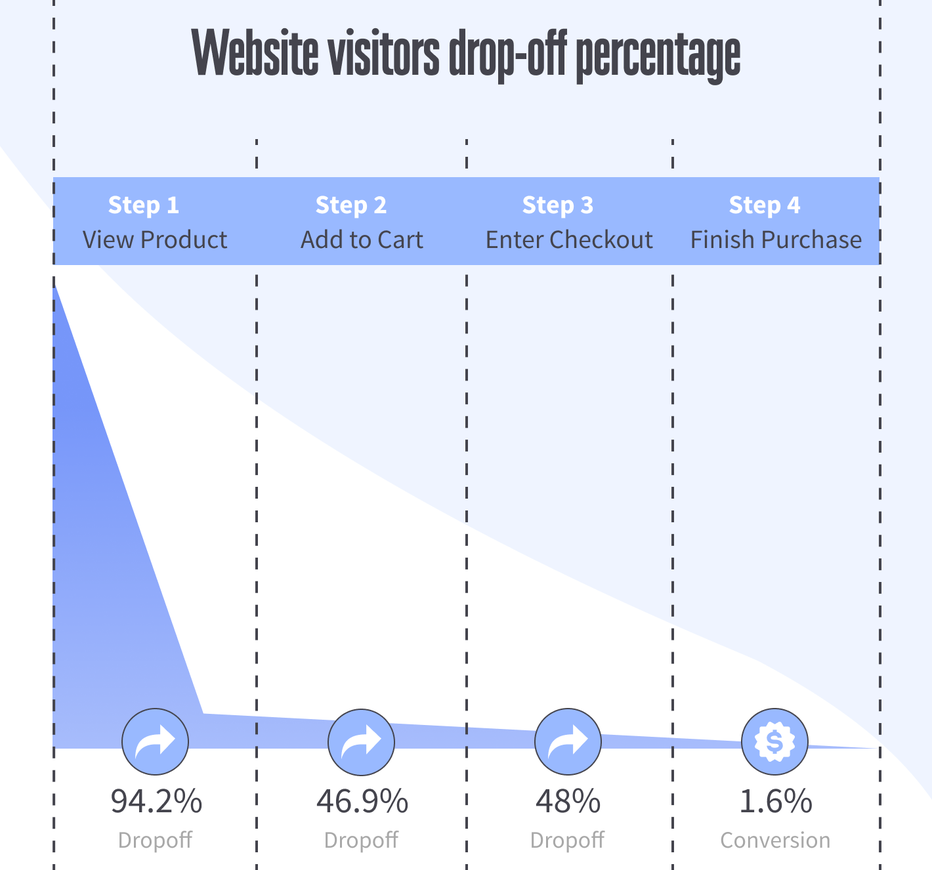
Constant Guidance from Experts
As we noted earlier, SEO is an ongoing process. You can’t just optimize your site and never think about SEO again. However, you may not be able to keep up with all the algorithm changes and developments in the SEO industry. By maintaining a relationship with an SEO agency, you’re guaranteed to have ongoing support from professionals. This will benefit both you and your customers.
Customized SEO Strategies
Not every SEO strategy is right for every business. If you merely Google “how to do SEO for eCommerce websites”, you’ll find lots of suggestions. The advice from one expert may contradict that of another. That’s because while there are certain SEO basics that apply to pretty much any website, there’s no single, fool-proof SEO strategy.
If you want to improve your click-through rates and conversions, you need to have a strategy that works for you. When you hire a local professional, you’ll get a strategy that’s specific to your industry, location, and business. Content will be written specifically for you and keywords will be chosen to outrank your competitors.
Increase Your Competitiveness with a Robust SEO Strategy
You now have a comprehensive guide to SEO for eCommerce sites. As the owner of an online store, you’ll likely use a variety of marketing strategies including advertising, email marketing, and social media marketing. However, you should never ignore SEO strategies for eCommerce websites.
The average person turns to Google or another search engine when they want to buy a product.
Whether they already know what they want and they’re ready to buy or they’re looking into all the available options and prices, they start with a search. Furthermore, they rarely go past the first page of results. If your website isn’t in the top ten, most people won’t see it. By investing in SEO, you can significantly increase the likelihood that your site will perform better than your competitors’.
SEO strategies don’t have to be complex to be successful and they can return results relatively quickly. However, not every business owner has the time or skills to devise and implement an SEO strategy. If that’s the situation in which you find yourself and you’d rather focus on the things you already know well, hire an agency to audit and improve your SEO.
The team at Direct Line Development can analyze your existing strategy, advise you on what you need to do, and even make all the changes for you. Contact us today to learn more about how you can use SEO to attract more traffic and convert browsers into buyers. We offer free website audits!






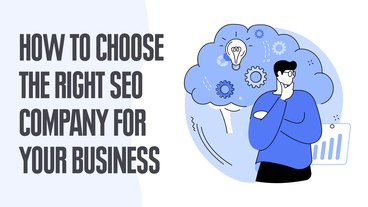
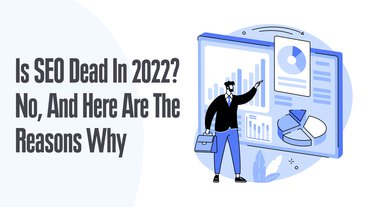
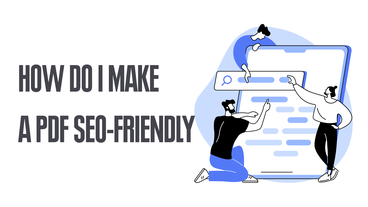

Comments